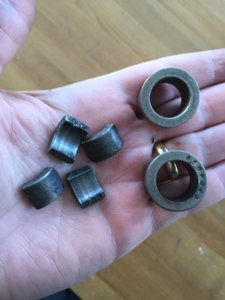adman02
Well-Known Member
- Joined
- May 15, 2009
- Location
- Durham, NC
Did a 4.0 swap to my 79 CJ7 and replaced the clutch and throwout bearing while the engine was out. After a few hundred miles, I had to replace the throwout bearing because it started to chatter and chirp. A few hundred miles later (today) I'm starting to hear the chatter/chirp again. Would a misaligned clutch cause the T/O bearing to fail prematurely? Would appreciate any help or insights as I damn sure don't want to drop the T18a any more.
4.0/CJ t18a/Dana 20/AMC 20 with a lockright locker
4.0/CJ t18a/Dana 20/AMC 20 with a lockright locker



